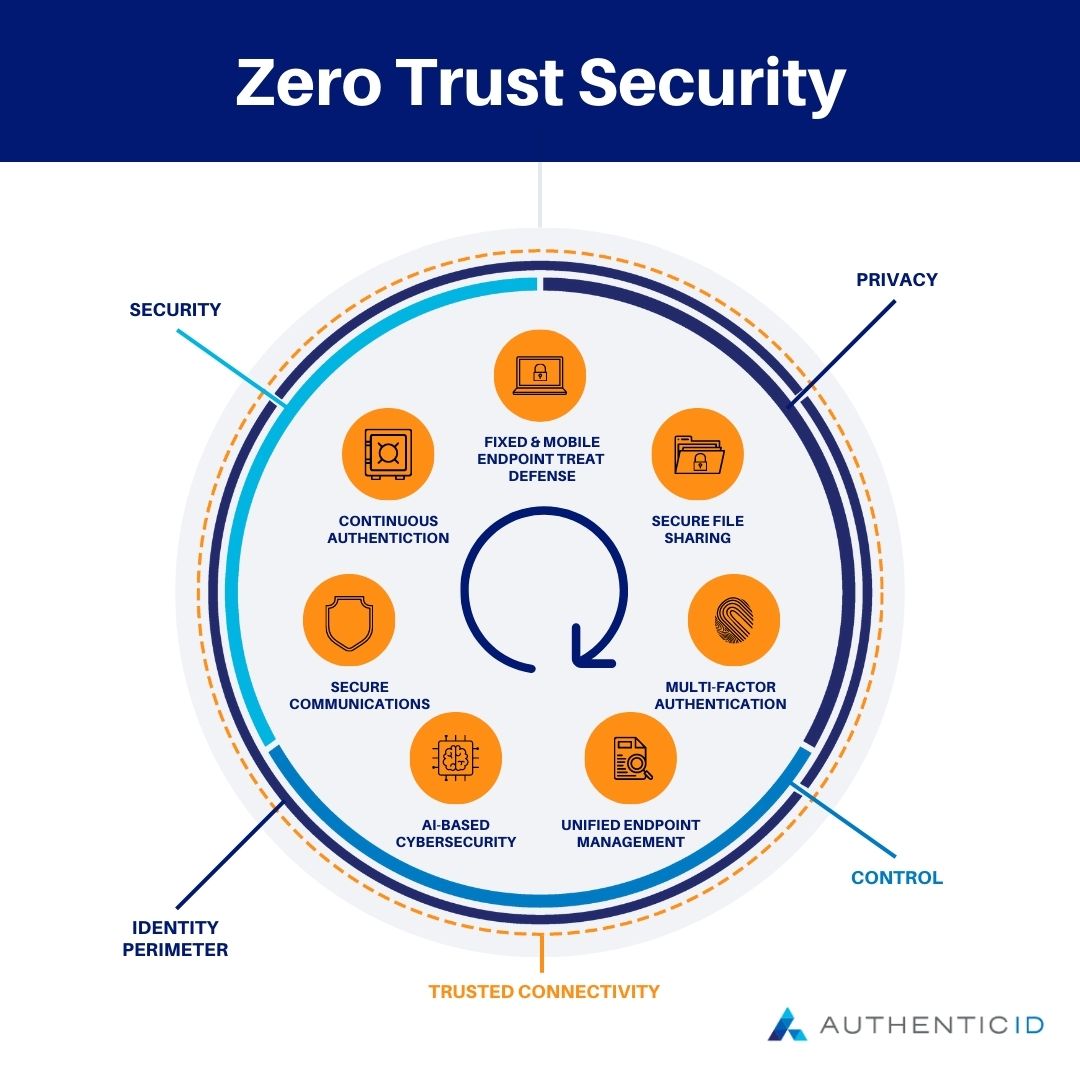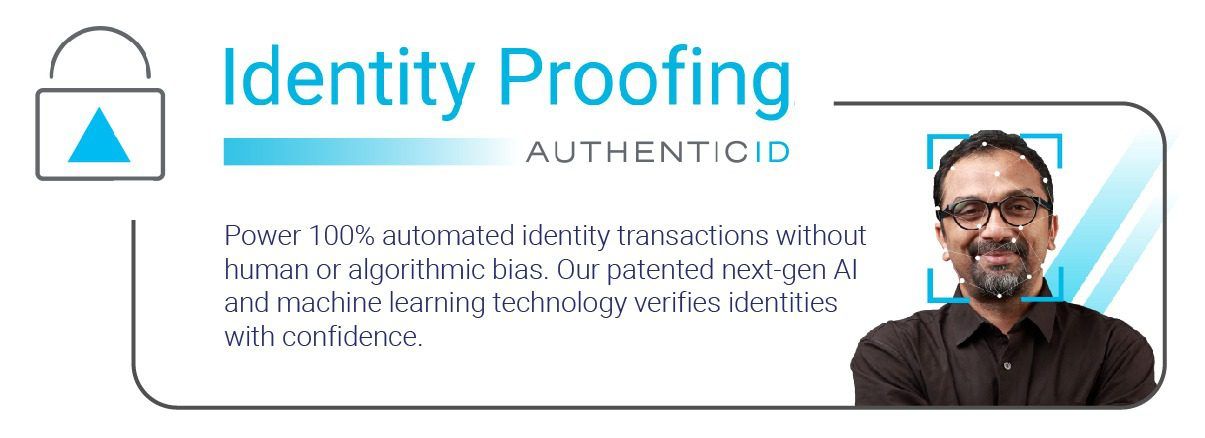Zero trust security is an IT framework that secures all access across corporate networks and environments by the default assertion that no user or application can be trusted. Verification is required from anyone attempting to gain access to a network. Zero trust utilizes continuous monitoring and validation, least privilege access, strict controls on device access, multi-factor authentication, and micro-segmentation. This architecture allows for simpler network infrastructure, improved user experience, and better cybersecurity.
Zero Trust Security Defined
With Zero Trust Security in place, system users are not trusted by default, and all individuals, devices, and applications trying to access a network must first verify their identity at each access attempt.
This is in contrast with the traditional ‘trust but verify’ approach that many organizations previously adopted where internal members could access all information and data once inside the network.
What is Zero Trust Security?
Zero Trust Security is a type of IT framework that an organization uses to secure its corporate networks and assets. This framework assumes that any user could be potentially malicious, so their identity must be verified before they can access sensitive data or information.
When a system utilizes Zero Trust Security, both internal and external users must continuously validate their credentials in order to gain or retain access to the network.
Zero Trust Security frameworks rely on a dynamic set of rules, policies, and advanced technologies that authenticate users in real-time based on their identities, the context of such a request, the device being used, the user’s location at the time of the log-in attempt, and the application or data trying to be accessed.
How is Zero Trust Security Used?
Zero Trust Security architecture is becoming more popular in the digital age where traditional network edges are no longer the norm. This type of framework can be applied to a local, cloud, or hybrid network, making it particularly useful for the modern-day work environment that consists of a growing number of remote or hybrid teams.
Rather than trusting all internal users and viewing any of their access attempts to the organization’s assets as typical, organizations can use Zero Trust principles to protect themselves against internal bad actors, or in the case that someone’s legitimate credentials are compromised.
In order to implement a Zero Trust Security model effectively, the organization must have a clear understanding of all internal accounts, what privileges they’re entitled to, and have rules about when and where they can access the organization’s assets.
In a Zero Trust environment, all access requests are continuously monitored and approved before being granted in an attempt to identify illegitimate requests before a costly and devastating breach can occur.

Benefits of Zero Trust Security
There are many cybersecurity benefits to using a zero trust security framework. Continue reading to explore the main advantages that zero trust principles provide:
1. Enhanced Security
Zero Trust Security frameworks offer modern-day organizations better cybersecurity measures that go beyond the traditional perimeter-based security models. Especially with hybrid and remote work environments gaining popularity in recent years, Zero Trust models work to continuously verify the identity of users, devices, and applications to prevent unauthorized access to sensitive data and resources. Plus, if an unauthorized user is able to enter a program or system within the organization, a Zero Trust Security framework ensures that they aren’t granted widespread access across the network.
2. Better for Compliance
Another benefit to organizations that implement Zero Trust Security principles is that it can help them comply with industry standards and regulations more easily. Such regulations include GDPR and HIPAA, two standards of data protection that certain organizations must adhere to.
At this point, many government agencies and contractors are adopting Zero Trust mandates, so it’s quickly becoming the standard for any organization that collects and stores sensitive user data.
Given the access control that Zero Trust Security provides, it’s easier for organizations to secure sensitive data and information within their systems, and audit user access to their network as needed.
3. Simplified Cybersecurity Management
Zero Trust Security frameworks also give organizations a simple and straightforward approach to data security.
Zero Trust principles can simplify the management of security policies by providing a unified framework for access controls that can be easily applied to all types of devices and applications, whether on-premise or in the cloud.
All in all, Zero Trust Security can reduce the complexity of managing data security across multiple platforms and applications, which is especially useful in today’s largely digital environment.
4. Reduced Risk
Additionally, Zero Trust Security policies can reduce the risk of data breaches, cyber-attacks, and other security incidents within an organization.
Since this type of security framework will prevent lateral movements within a network, organizations can limit the impact of potential security breaches that may occur at the hands of bad actors.
So, by enforcing the principle of least privilege, Zero Trust Security ensures that users and devices only have access to the resources they need to perform their duties.
5. Better Visibility
Lastly, adopting Zero Trust Security gives organizations enhanced visibility into user and device behavior within their network. This is due to the continuous monitoring of access attempts under a Zero Trust framework.
So, this data security approach gives organizations a way to address data security threats and potentially malicious system events in real-time.
Common Uses of Zero Trust Security
Zero Trust Security isn’t an entirely new concept in cyber security, though it has grown in relevance in recent years as networks become increasingly more complex in this cloud-based environment. Thus, organizations are showing a growing need for a sophisticated yet straightforward way to prevent security breaches.
Let’s take a look at some of the main use cases of Zero Trust Security today:
• Hybrid/Remote Workplace: The rise in remote and hybrid teams is growing organizations’ reliance on cloud-based applications and systems; Zero Trust Security models can help protect their data and systems by ensuring that only authorized users and devices can access them, no matter their location
• Compliance: Depending on the industry, organizations may be subject to strict regulatory requirements when it comes to data security including healthcare, financial services, and government agencies or contractors; Zero Trust Security helps organizations stay compliant by enforcing strict access controls to sensitive user data
• IoT Devices: As the use of Internet of Things (IoT) devices continues to grow, there will be a new set of security challenges facing organizations; Zero Trust Security can protect networks by ensuring that only authorized users and devices can access them, and monitoring user behavior for any signs of suspicious activity
